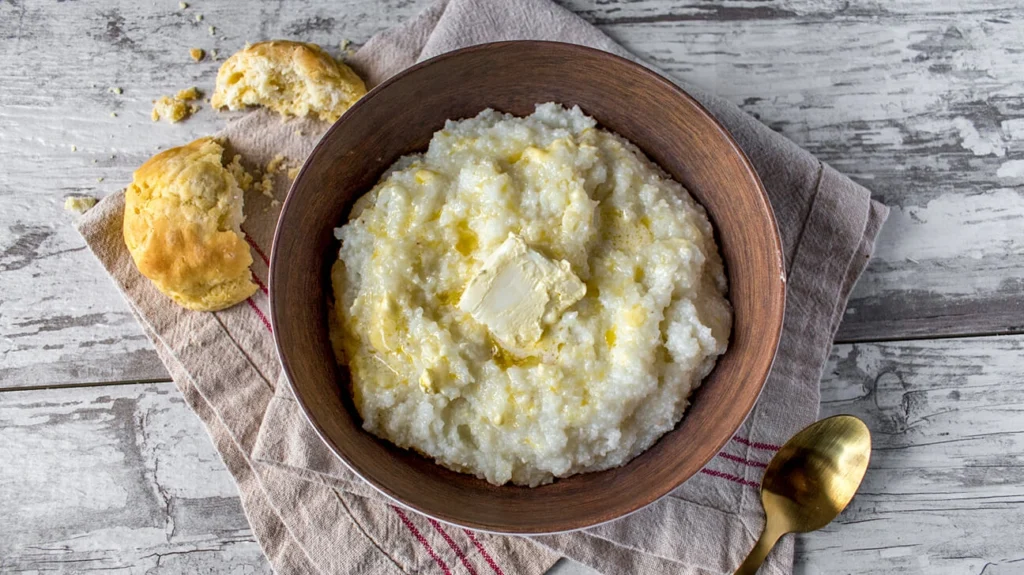
When managing diabetes, every food choice matters. People with diabetes are often told to avoid starchy foods, especially those with a high glycemic index (GI). But what about grits—a traditional Southern staple made from ground corn? Many are asking: can diabetic eat grits and still maintain healthy blood sugar levels?
Let’s dig into the facts, break down the nutritional profile, and explore how grits might fit into a diabetic-friendly diet.

Content
What Are Grits, Exactly?
Grits are made from dried corn that’s ground into a coarse meal. They’re typically boiled with water or milk until they become a creamy porridge. There are several types:
- Stone-ground grits – less processed, higher in fiber.
- Quick or instant grits – more processed, lower in nutrients.
- Hominy grits – made from corn treated with alkali, altering its nutrient profile.
Each type of grit can affect blood sugar differently, making disease and medication awareness essential for those with diabetes when choosing which to eat.
Nutritional Profile of Grits
A one-cup serving of cooked grits contains roughly:
- Calories: 150
- Carbohydrates: 31 grams
- Fiber: 1–2 grams
- Protein: 3–4 grams
- Fat: 1 gram or less
Because grits are high in carbohydrates and low in fiber, they can cause a spike in blood sugar—especially when consumed alone.
Glycemic Index: Why It Matters for Diabetics
The glycemic index (GI) measures how quickly a food raises blood glucose levels. Grits have a high GI, typically between 69 and 90, depending on processing. This means they can cause rapid spikes in blood sugar, which isn’t ideal for diabetes management.
However, not all grits are created equal. Stone-ground or whole-grain grits have more fiber and nutrients, which can help slow sugar absorption.
Can Diabetic Eat Grits?
The short answer is: Yes, but with caution.
Here are some tips to include grits in a diabetes-friendly meal plan:
- Choose stone-ground grits – They’re less processed and higher in fiber.
- Watch your portion size – Stick to ½ cup cooked to keep carbs manageable.
- Balance your plate – Pair grits with protein (like eggs or turkey sausage) and healthy fats (like avocado) to slow digestion and reduce blood sugar spikes.
- Skip added sugars – Avoid flavored or instant grits that contain sweeteners.
- Monitor your blood sugar – Everyone reacts differently. Check your glucose levels after eating to understand how grits affect you personally.
For a deeper dive into this topic, visit this comprehensive guide: can diabetic eat grits.
Healthier Alternatives to Try
If grits don’t work for your blood sugar goals, consider:
- Steel-cut oats
- Quinoa
- Chia pudding
- Cauliflower grits (a low-carb, diabetes-friendly swap)
Each of these can offer a similar texture or flavor experience with better blood sugar control.
Final Thoughts
While grits aren’t off-limits for people with diabetes, the key is moderation and smart pairing. Paying attention to type, portion size, and what you eat them with can help prevent unwanted glucose spikes. As always, consult your healthcare provider or a registered dietitian for personalized advice.
For more insights on managing chronic conditions through diet and lifestyle, check out disease and medication awareness.

Maria Thompson is a health blogger who enjoys writing on her website. Maria has always had an interest in medicine, and she hopes to become a doctor one day. She loves reading about medical discoveries, especially when they are for rare conditions that don’t have much research yet. She also likes exploring the science behind different diets and nutrition programs.







